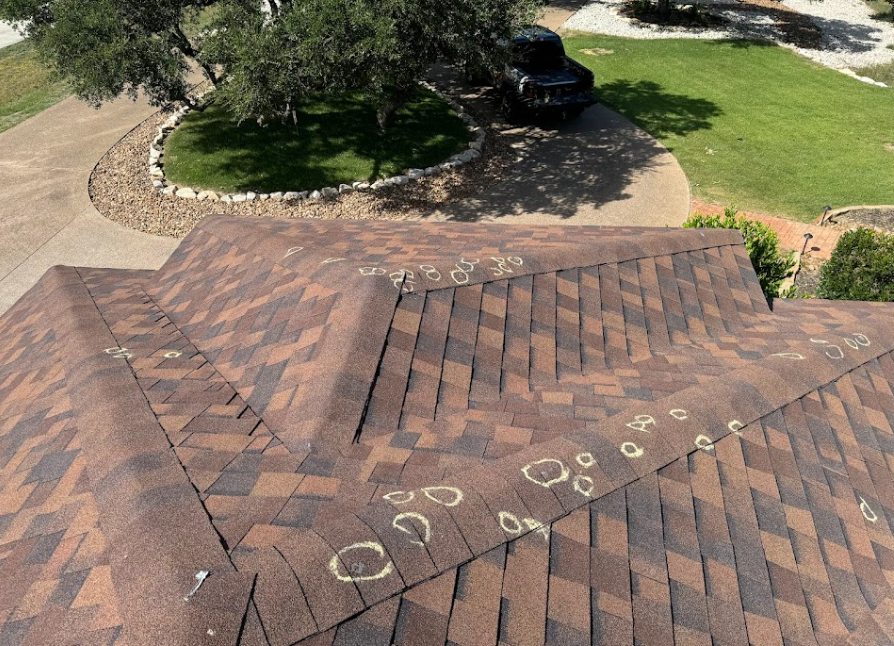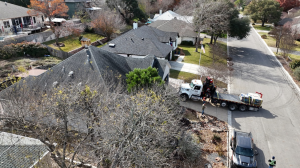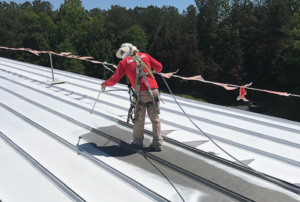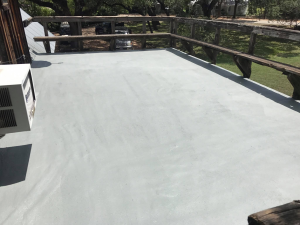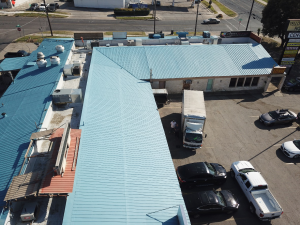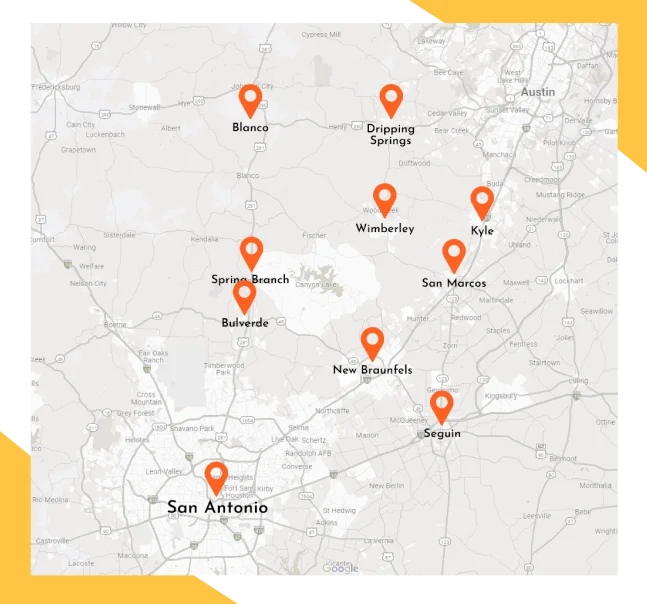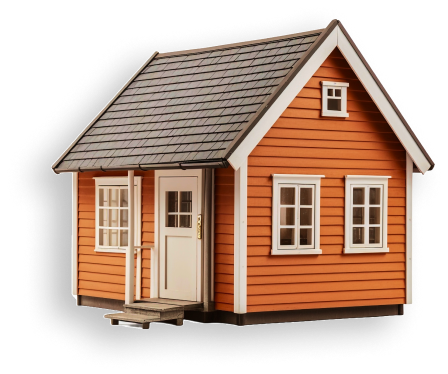Your roof may look fine at a glance, but hidden damage can be lurking beneath the surface. Issues like leaks, rot, and structural weaknesses often go unnoticed until they cause significant problems. Regular roof inspections are essential to uncover these hidden dangers early and prevent costly repairs in the future.
Let’s dive into why roof inspections are important and how they help protect your home from hidden roof damage.
What Is Hidden Roof Damage?
Hidden roof damage refers to issues that aren’t immediately visible from the ground or even during a casual glance at your roof. Roofing problems typically arise gradually due to factors such as wear and tear from weather conditions, aging materials, improper installation, and inadequate maintenance.
Hidden damage in a home can manifest in various ways, such as tiny leaks that compromise the structure, rotting wood due to trapped moisture, and weak or missing flashing around vents and chimneys. Additionally, loose or damaged shingles often go unnoticed without a close inspection.
If left unchecked, such issues can escalate into bigger problems, including water damage, mold growth, and even structural failure.
Why Are Regular Roof Inspections Important?
Roof inspections are your best defense against hidden roof damage. They involve a thorough check of every part of your roof, including areas you can’t easily see. Inspections are crucial because they:
- Detect Problems Early:Inspections reveal small issues before they worsen.
- Prevent Expensive Repairs:Fixing minor damage is far cheaper than dealing with major repairs or roof replacement.
- Extend Roof Lifespan:Regular maintenance and timely repairs help your roof last longer.
- Protect Your Home:A strong roof keeps your home protected from leaks, weather, and structural damage.
How Roof Inspections Uncover Hidden Damage
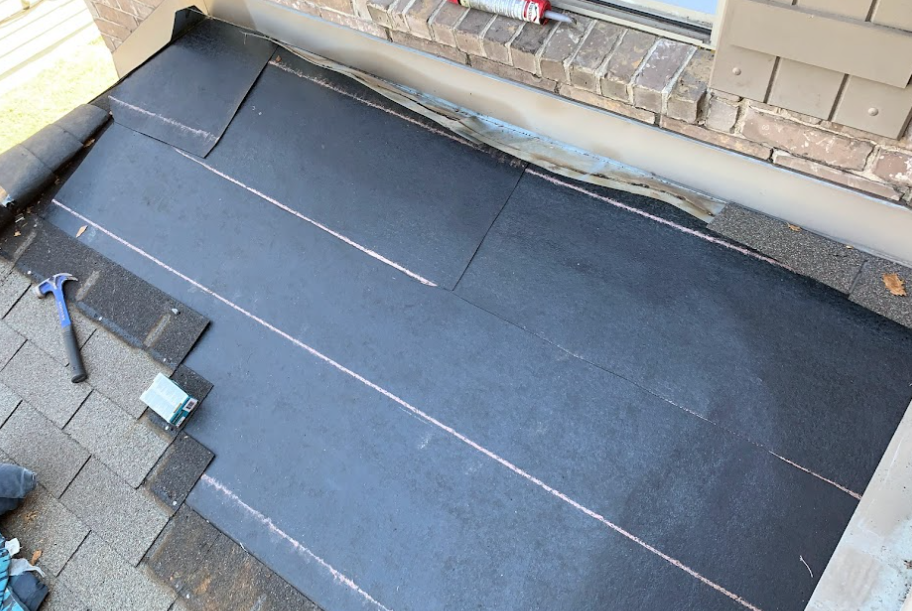
Identifying Leaks and Water Damage
Water leaks are one of the most common forms of hidden roof damage. Even a small leak can cause significant issues if it reaches your home’s interior. During an inspection, professionals typically search for water stains on ceilings or walls, soft or sagging areas in the roof decking, and damp insulation in the attic. These signs can indicate potential water damage or structural issues that need to be addressed.
Catching leaks early prevents them from spreading, saving you from costly repairs and potential mold remediation.
Checking for Rot and Decay
Rot often develops in areas where moisture has been trapped over time. This can weaken your roof’s structure, making it less durable. Inspectors look for signs of damage in several key areas. They check for rotting wood in the decking or supports, inspect for damaged or missing shingles that may allow water to penetrate, and look for any signs of decay around vents, chimneys, and skylights.
Addressing rot promptly ensures your roof remains strong and capable of protecting your home.
Examining Flashing and Seals
Flashing and seals are essential components of a weatherproof roof. They cover vulnerable areas like chimneys, vents, and skylights. Inspectors assess buildings by looking for sagging roofs, cracks in beams or rafters, and indications of shifting or instability.
Repairing these small issues prevents water infiltration and extends the life of your roof.
Spotting Structural Weaknesses
Your roof’s structure supports its weight and ensures it can withstand weather elements. Over time, hidden damage can weaken this structure. Inspectors evaluate structures for sagging roofs, cracks in beams or rafters, and any signs of shifting or instability.
Fixing these problems early prevents serious issues like roof collapse.
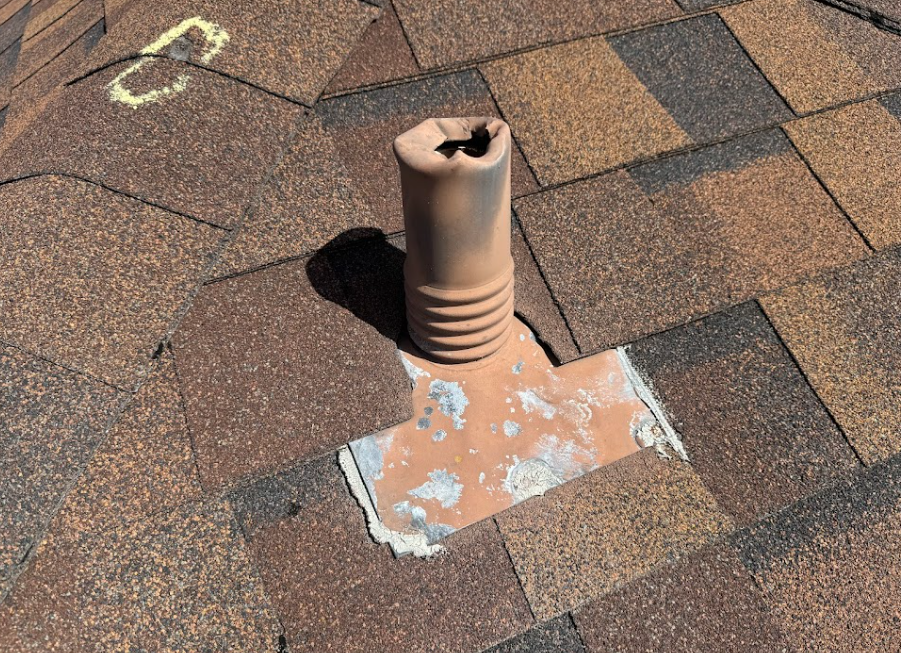
Finding Shingle Damage
Shingles are your roof’s first line of defense. Even if they look fine from the ground, they can have damage that’s easy to miss. Inspectors assess roofs for signs of issues such as dark streaks or patches that indicate mold or algae, moisture buildup that creates a conducive environment for growth, and damage to shingles caused by prolonged exposure to the elements.
Replacing damaged shingles promptly protects your roof from further wear and tear.
Detecting Mold and Algae
Mold and algae often develop in damp, shaded areas of your roof. While they may seem like cosmetic issues, they can damage roofing materials over time. Inspectors assess roofs for dark streaks or patches that indicate mold or algae, moisture buildup that fosters growth, and damage to shingles resulting from prolonged exposure to the elements.
Cleaning and treating these areas keeps your roof healthy and looking great.
The Risks of Ignoring Hidden Roof Damage
Failing to address hidden roof damage can lead to serious consequences, including:
- Water DamageCost: Leaks can ruin insulation, walls, ceilings, and even flooring.
- Mold Growth:Moisture creates the perfect environment for mold, which can affect indoor air quality and health.
- Structural Issues:Rot and decay weaken your roof’s foundation, making it less stable.
- Higher Repair Costs:Small, inexpensive repairs can escalate into costly projects if neglected.
- Decreased Home Value:A damaged roof can deter potential buyers and lower your home’s market value.
By scheduling regular inspections, you can avoid these risks and keep your roof in excellent condition.
How Often Should You Schedule Roof Inspections?
Experts recommend inspecting your roof at least twice a year—once in the spring and once in the fall. This ensures your roof is prepared for the extreme weather conditions of summer and winter. It’s important to schedule inspections after severe storms with heavy rain, hail, or strong winds, as these can cause damage. Also, if you notice signs like leaks or sagging, an inspection is recommended. Finally, if you’re buying or selling a home, getting an inspection beforehand can help address any concerns.
DIY vs. Professional Inspections
While you can do a basic roof check yourself, professional inspections are far more thorough and reliable. Hiring professionals ensures issues are spotted, enhances safety, and allows for thorough checks of hard-to-reach areas. This gives homeowners peace of mind about their roof’s condition.
Hiring a professional inspector ensures that no detail is overlooked, giving you peace of mind about your roof’s condition.

Steps to Take After an Inspection
Once the inspection is complete, you’ll receive a detailed report outlining any issues and recommendations for repairs. Here’s what to do next:
- Address Urgent Repairs:Fix leaks, damaged flashing, or structural issues immediately to prevent further damage.
- Plan for Long-Term Maintenance:Schedule routine cleanings, gutter maintenance, and minor repairs as needed.
- Keep Records:Maintain a file with inspection reports and repair receipts to track your roof’s history.
The Bottom Line
Hidden roof damage can cause major problems if left unchecked, but regular inspections help you stay ahead of potential issues. By uncovering leaks, rot, and structural weaknesses early, you save money, extend your roof’s lifespan, and protect your home.
Don’t wait for visible signs of damage to appear—schedule your next roof inspection with Boomerang Building & Repairs today. We excel in quality roofing services such as Expandothane services, roof waterproofing solutions, roof leak prevention solutions, commercial roof installations in New Braunfels, commercial roof repair, and remodeling services.
It’s a small step that makes a big difference in keeping your home in good hands with top-quality roofing. Contact us now to get started.


